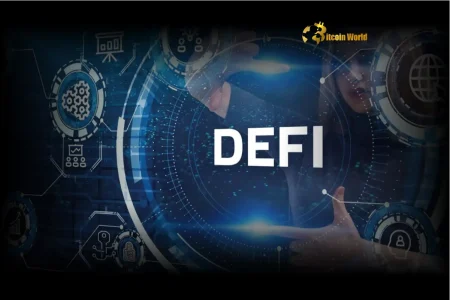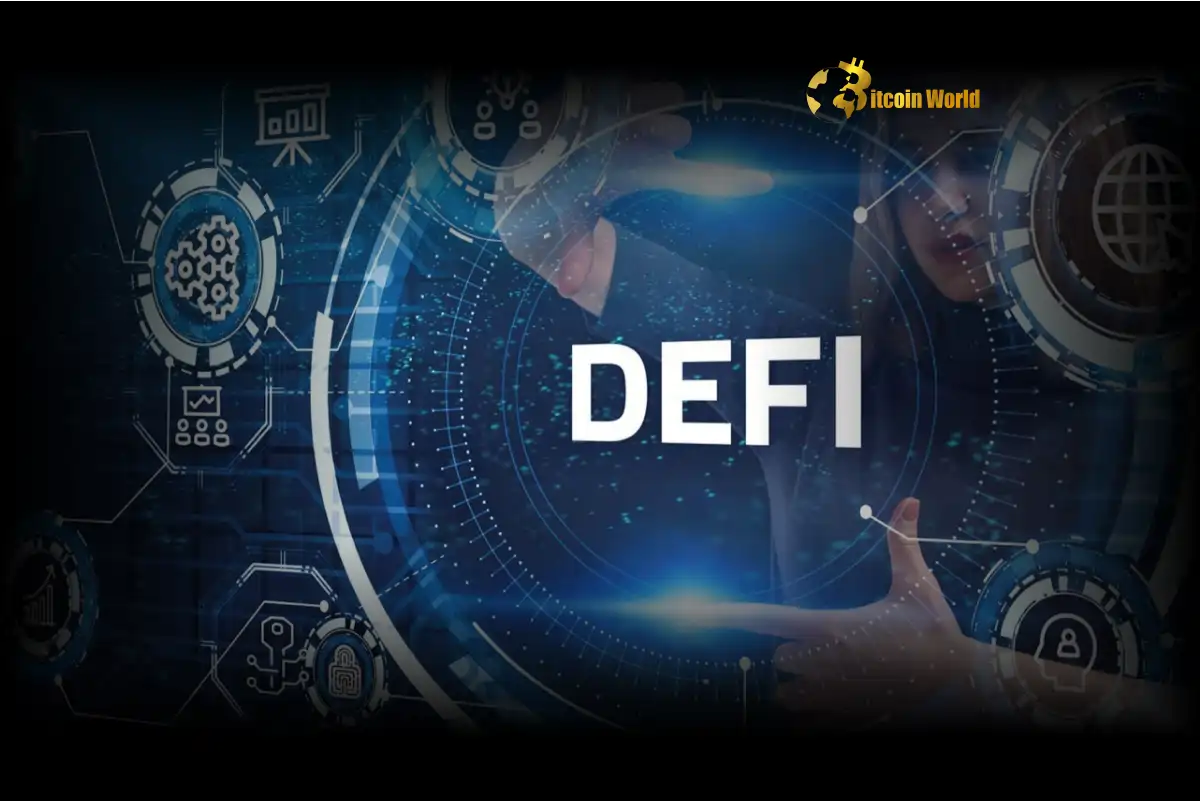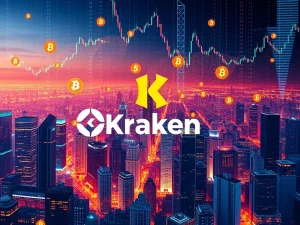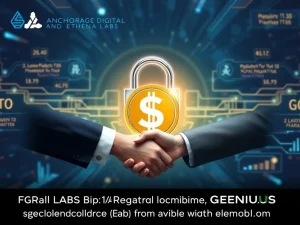Decentralized Finance: Unlocking the Explosive Future of DeFi
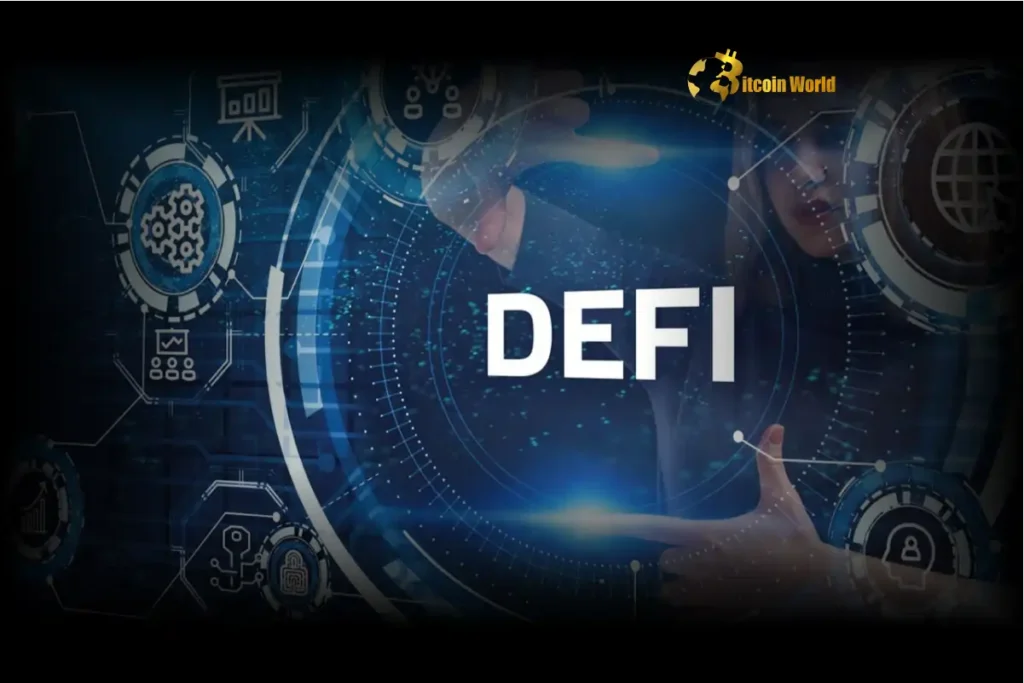
BitcoinWorld
Decentralized Finance: Unlocking the Explosive Future of DeFi
Have you ever wondered what’s next for finance? The world of money is changing rapidly, and at the heart of this transformation lies Decentralized Finance (DeFi). It’s not just a buzzword; it’s a movement building a new financial system on blockchain technology, free from traditional intermediaries. This article dives deep into the exciting DeFi Future and what it means for you.
What is Decentralized Finance (DeFi) Anyway?
Before we look ahead, let’s quickly touch on what DeFi is. In simple terms, DeFi refers to financial applications built on blockchain networks, primarily Ethereum, that operate without central authorities like banks or brokers. Think lending, borrowing, trading, and insurance, but powered by smart contracts – self-executing agreements written directly into code.
Key characteristics include:
Permissionless: Anyone with an internet connection can participate.
Transparent: Transactions are recorded on a public ledger.
Composable: Different DeFi protocols can interact like financial Lego blocks.
Immutable: Once recorded, transactions are extremely difficult to alter.
This structure opens up financial services to a global audience, potentially lowering costs and increasing efficiency compared to traditional finance (TradFi).
Why is DeFi Booming and What’s Driving its Growth?
The growth of DeFi has been nothing short of phenomenal. What started as niche experiments has evolved into a multi-billion dollar ecosystem. Several factors fuel this expansion:
Accessibility: DeFi provides financial services to the unbanked and underbanked globally.
Innovation: The open-source nature encourages rapid development of new financial products and strategies.
Yield Opportunities: Strategies like Yield Farming offer potentially attractive returns on crypto assets, drawing users in.
Demand for Alternatives: Users are seeking alternatives to traditional financial institutions due to various reasons, including fees, censorship, and lack of control.
Technological Advancements: Improved blockchain scalability and interoperability are making DeFi more practical and efficient.
The composability aspect is particularly powerful. Developers can build new applications by combining existing protocols, leading to rapid DeFi Innovation and complex financial strategies.
Exploring the DeFi Future: What’s Next?
The journey for DeFi is far from over. The next few years promise significant evolution. Here’s a look at some key trends shaping the DeFi Future:
Bridging the Gap: DeFi Meets Traditional Finance
One of the most anticipated developments is the convergence of DeFi and TradFi. Institutions are exploring how to leverage blockchain and DeFi principles for efficiency, tokenization of real-world assets, and new forms of structured finance. Expect to see more regulatory clarity and infrastructure built to facilitate institutional participation.
Enhanced Scalability and Efficiency
Current blockchain limitations, particularly on Ethereum’s mainnet, can lead to high transaction fees (gas costs) and slow speeds during peak times. Layer 2 scaling solutions (like rollups) and alternative blockchains designed for DeFi are crucial for mass adoption. These technologies aim to make DeFi faster and cheaper for everyday users.
The Rise of Decentralized Identity (DID)
For DeFi to truly compete with TradFi, concepts like credit scoring and identity verification are necessary for more sophisticated financial products (e.g., undercollateralized loans). Decentralized Identity solutions are being developed to allow users to manage their digital identity and reputation without relying on central authorities, potentially enabling new forms of Crypto Lending.
Insurance and Risk Management
As the DeFi ecosystem grows, so does the need for robust insurance and risk management protocols. Decentralized insurance platforms are emerging to cover smart contract risks, stablecoin de-pegging, and other potential failures. Better risk assessment tools and models are also vital for the sustainability of protocols, especially those involved in Yield Farming.
Improved User Experience (UX)
Currently, interacting with DeFi can be complex for newcomers. Future developments will focus on creating more intuitive interfaces, easier onboarding processes, and better wallet integration to make DeFi accessible to a broader audience.
What Challenges Does Decentralized Finance Face?
Despite its potential, DeFi is not without its hurdles. Understanding these challenges is crucial when considering the DeFi Future:
Common challenges facing the Decentralized Finance ecosystem.
Security Risks: Smart contract vulnerabilities, hacks, and exploits remain significant threats. Auditing and formal verification are improving but require continuous effort.
Regulatory Uncertainty: Governments worldwide are still figuring out how to regulate DeFi. Lack of clear rules creates uncertainty for both users and developers.
Scalability Issues: As mentioned, scaling blockchain networks to handle millions of users and transactions efficiently is an ongoing challenge.
User Error: DeFi places responsibility directly on the user. Lost private keys or sending funds to the wrong address can result in irreversible losses.
Market Volatility: The value of crypto assets can be highly volatile, impacting the stability of DeFi protocols built upon them.
Addressing these challenges is paramount for the long-term health and adoption of Decentralized Finance.
Real-World Examples and Use Cases
DeFi isn’t just theoretical; it’s already powering various applications. Here are a few examples:
Lending and Borrowing: Platforms like Aave and Compound allow users to lend their crypto assets to earn interest or borrow assets by providing collateral. This is a core component of Crypto Lending.
Decentralized Exchanges (DEXs): Uniswap, SushiSwap, and PancakeSwap enable peer-to-peer trading of cryptocurrencies without a central order book. Users trade directly from their wallets.
Yield Farming and Liquidity Mining: Users can deposit funds into liquidity pools to earn rewards (often in the form of governance tokens) and a share of trading fees. This is the essence of Yield Farming.
Stablecoins: Cryptocurrencies pegged to the value of traditional assets like the US dollar (e.g., DAI, USDC) are fundamental building blocks for stability within the volatile crypto market, crucial for many DeFi Innovation projects.
Actionable Insights: How to Navigate the DeFi Landscape
Interested in exploring the DeFi Future? Here are some actionable tips:
Do Your Own Research (DYOR): Understand the risks involved. Never invest more than you can afford to lose.
Start Small: Begin with small amounts to get familiar with wallets, protocols, and transaction processes.
Prioritize Security: Use reputable wallets, enable two-factor authentication, and be wary of phishing attempts. Understand how to secure your digital assets.
Understand the Protocols: Read documentation, understand how a protocol works, its risks, and its tokenomics before committing funds.
Stay Informed: Follow reputable news sources, join relevant communities, and keep up with the latest developments in Decentralized Finance.
DeFi Opportunity
Potential Benefit
Key Risk
Crypto Lending
Earn passive income on assets
Counterparty risk, smart contract risk
Yield Farming
High potential returns
Impermanent loss, protocol risk, volatility
Decentralized Exchange (DEX) Trading
Access to wide range of tokens, self-custody
High fees (on some chains), slippage, complex interfaces
Engaging with DeFi Innovation requires careful consideration and a commitment to continuous learning.
Conclusion: The Exciting Road Ahead for Decentralized Finance
The DeFi Future holds immense promise. It represents a fundamental shift towards a more open, accessible, and efficient financial system. While challenges like security, regulation, and scalability persist, the rapid pace of DeFi Innovation and development suggests that solutions are constantly being explored and implemented.
Whether you’re interested in Crypto Lending, exploring Yield Farming opportunities, or simply curious about the future of money, Decentralized Finance is a space worth watching. Its potential to reshape global finance and empower individuals is truly revolutionary. The journey is ongoing, and the developments ahead are set to be truly transformative.
To learn more about the latest Decentralized Finance trends, explore our article on key developments shaping DeFi innovation.
This post Decentralized Finance: Unlocking the Explosive Future of DeFi first appeared on BitcoinWorld and is written by Editorial Team

